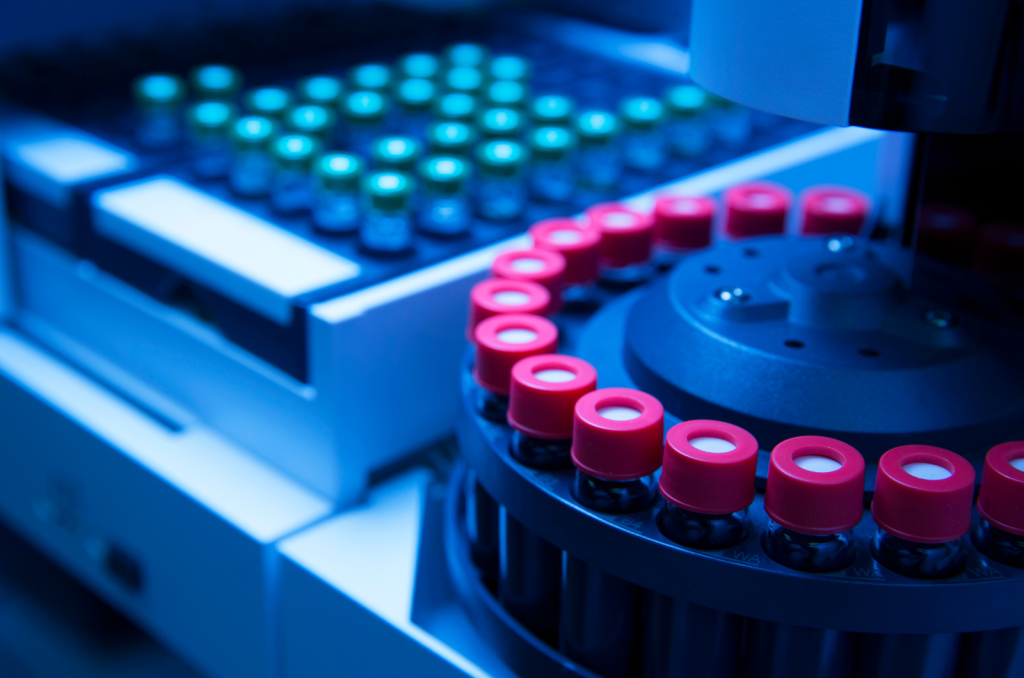
When you peek into the world of cadaver lab anatomy, you enter a realm where precision meets practice. These labs are critical for medical students and professionals, allowing them to get a close-up look at human anatomy, far beyond what any textbook can offer. These are spaces equipped with state-of-the-art tools, designed to hone surgical skills and expand our understanding of the human body. This hands-on experience is irreplaceable, giving learners the opportunity to refine techniques in a way that no simulation can match. And yet, there is an unwavering respect here – strict adherence to ethical standards – ensuring that every donated body assists science within carefully considered moral boundaries. If you delve deeper, you will understand why cadaver labs remain so central to medical training, while navigating these complex ethical waters.
Overview of Cadaver Lab Anatomy
When you enter a cadaver lab, it's like opening a book to the most detailed chapter on human anatomy. There is no substitute for real-world experience, and that is exactly what these labs offer – unparalleled insights into the complexities of the human body. You are not just reading about anatomical structures, but actually seeing, touching, and exploring them in a real three-dimensional environment. This experience allows you to understand the spatial relationships between organs and tissues in a much more intuitive and profound way than any diagram or plastic model.
The Importance of Real Human Cadavers in Anatomy Education
Anatomy education takes a significant leap forward when students learn with real human cadavers. It's far beyond what any textbook or life-size model could ever convey; there is an irreplaceable depth in this kind of learning. Dissecting a human cadaver provides healthcare professionals and students with firsthand knowledge that helps bridge the gap between theory and practice, and often reveals more than data points – it reveals entire stories within biological systems. You discover the natural variation between people, which textbooks tend to simplify. Each cadaver is a world of its own, with a unique medical history that may be expressed in anatomical findings.
Compared to alternative methods, studies have shown that using real specimens can dramatically improve the understanding of complex anatomical relationships – a key advantage noted by many research centers around the world. And from the personal experience of someone who has been deeply immersed in dissections – it adds layers upon layers to your levels of understanding. As you separate tissues, trace blood vessels and nerves, you develop a three-dimensional sense of the body that cannot be acquired in any other way.
If we're talking numbers, know this: those engaged in cadaver training tend not only to get better grades, but also to reduce complications in surgeries later in their careers, because they have seen with their own eyes how tissues connect or how organs fit together within real human beings. There is no doubt that anyone who emerges from such intense encounters carries with them not only skills, but also a deep respect for both science and the gift that donors provide through their invaluable post-mortem donation – an emotion that resonates throughout operating rooms, where precision matters every second.
State-of-the-Art Facilities for Cadaver Lab Training
Modern cadaver labs are a revolutionary development in the field of human anatomy studies and understanding. The real magic happens in spaces where fresh-frozen cadavers become the best teachers, allowing students to explore human bodies with an authenticity that a textbook can never match. These facilities are carefully designed to provide an optimal learning environment, with proper lighting, efficient ventilation, and quality surgical tools.
Fresh-Frozen Cadavers for Optimal Learning
In places like the MARC Institute, the anatomy lab facilities boast state-of-the-art resources specifically designed around the use of these high-quality specimens. It's not just about access to human cadavers; it's also about ensuring that they are preserved in a way that preserves their integrity – making them ideal models for dissection and medical training. The fresh-freezing method preserves the texture, color, and flexibility of tissues in a way that is closest to the living state, unlike older preservation methods that involved the use of high-concentration formalin, which caused the tissues to be hard and less realistic.
The realism here is unmatched because fresh preservation techniques allow healthcare professionals to see delicate anatomical details up close. The importance of this hands-on experience cannot be overstated; there is simply no substitute for practicing on real tissues when it comes to improving surgical skills or preparing future physician assistants or surgeons. You can feel the differences between different types of tissues, the tension of tendons, and the delicacy of blood vessels and nerves.
You are welcome to dive into our 360° view to witness firsthand how advanced equipment used in a cadaver lab bridges the gap between theory and practice, providing valuable insights into what lies beneath our skin. As you navigate this virtual tour, imagine yourself part of groups of students working diligently, equipped with tools like small and large bone saws – not just reading a textbook but actually applying knowledge as they dissect under guidance. The power of learning in such innovative environments extends far beyond academic curiosity – it shapes confident caregivers, ready to uphold healthcare standards while progressing towards safer operating rooms around the world. Want more information? You are welcome to explore our facility.
Hands-on Experience with Human Cadaver Training
A tangible understanding of the human body is best achieved through hands-on experience with cadaver training. It's one thing to read about an artery in a textbook; it's quite another to hold it between your forceps. Medical students and healthcare professionals gain unparalleled insights as they navigate real tissues and structures in our state-of-the-art facilities. This experience imprints the knowledge more deeply, turning abstract concepts into tangible reality.
Improving Surgical Techniques Through Practice
Surgical mastery requires more than theoretical information – it needs the touch, the feel, and the spatial recognition that only practice can provide. This is where human cadaver training for medical students and professionals comes in, becoming invaluable. Dissecting a real human cadaver reveals complexities that cannot be achieved through charts or simulations. With each incision in donated bodies – a privilege we treat with the utmost respect – future surgeons hone critical skills to reduce complications when every second counts during live surgeries. The ability to practice complex surgical procedures in a patient-risk-free environment is a huge advantage.
Cadavers serve as silent teachers, making their final contribution to science by helping to reduce surgical risks – a noble final act documented in studies showing fewer mishaps on operating tables thanks to rigorous training protocols used in educational institutions around the world. Data points indicate that such practical applications of cadaver lab anatomy can significantly reduce potential problems down the road, highlighting why these experiences are essential steps towards providing competent care that meets stringent health standards. We ensure that safety protocols reflect those in a real operating room, because if you're going to learn how things work under pressure, there's no better teacher than reality itself. For detailed guidance on techniques perfected through dissection labs or more information on joining us for our next session, you are welcome to browse our educational resources here.
Ethical Considerations in Cadaver Dissection
When it comes to delving into the intricate nuances of human anatomy, there is nothing that compares to dissecting real cadavers to gain a deep understanding. But this right carries with it profound ethical considerations that demand our full respect and adherence. Consent processes for donated bodies form the cornerstone of this ethics, ensuring that individuals who generously donate their remains do so voluntarily and are aware of how their donation will be used for scientific research. Respect for the donor and their family is paramount at all stages of the process.
Maintaining Safety Standards
The use of human specimens in an educational setting is not just a matter of respect; it is also subject to strict safety protocols in cadaver labs. These rigorous procedures are essential – they help protect both students and instructors from biological hazards such as hepatitis B, while maintaining a respectful attitude towards those who have passed away. The existence of such standards is what allows us to delve into anatomical research without moral reservations or health concerns. This includes the use of personal protective equipment, strict disinfection procedures, and proper handling of biohazardous waste.
In addition to physical safety measures, legal aspects also play a central role. Every step – from acquiring the body to dissection – must strictly comply with health standards set by governing bodies around the world, city after city, whether you are training graduate students in a community college setting or guiding groups of high school students in an introductory course.
Understanding the Legal Aspects Behind Body Donation
If we delve deeper than consent forms and biohazard waste bins, we must recognize body donation as a gift that keeps on giving long after the heartbeats have faded. Each donor provides future healthcare professionals with an irreplaceable hands-on experience – a valuable resource that far surpasses any textbook chart or life-size model available elsewhere. This understanding requires respectful consideration throughout the procedure in these sensitive environments: naming each vein located during practice ensures a memory beyond counting teeth or using a bone saw – it fosters a sense of comfort within cold steel tables typical of operating room simulations. It is an act of recognizing the humanity of the donor, even after death, and acknowledging their immense contribution to science and medicine.
Exploring anatomy in a cadaver lab has been eye-opening. You have seen how real human cadavers are irreplaceable in studying the complexities of the body. The state-of-the-art facilities bring textbooks to life, ensuring that every incision counts. There is no doubt that the understanding gained from this experience is profound and multi-dimensional, best preparing you for future professional challenges.
Diving into hands-on experience hones skills and saves lives down the road. It's also a matter of respect – honoring those who donate their bodies to science with dignity and care. The ethical and respectful approach is an integral part of learning, instilling in you values that will accompany you throughout your career.
Apply what you have learned to further hone your skills and use it as a guide in healing others. These labs are not just rooms; they are gateways to mastering medical practice. So take this knowledge, treat it with reverence, and let it guide your hands in healing others. Always remember the precious gift you received from the donors, and continue their legacy by providing the best possible care to your patients.
